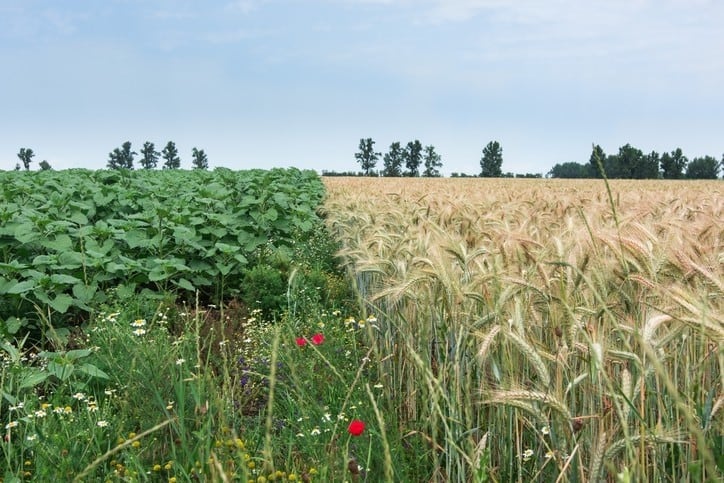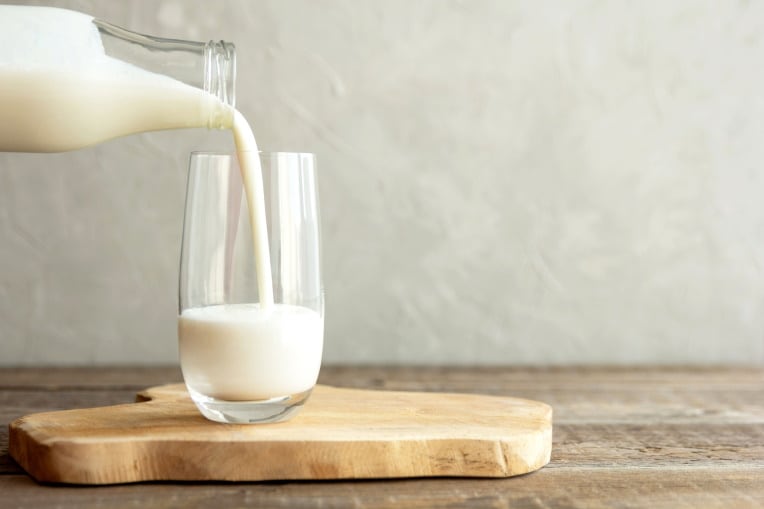Producing enough food to provide adequate nutrition for the growing global population without wrecking the planet in the process is one of the greatest challenges of our times. The global population is forecast to reach almost 10bn people by 2050 and already more than 811m people go to bed hungry.
Organic farming is seen as one potential solution. The EU Farm to Fork strategy places farming at the heart of its ambition to transition towards a more sustainable food system and includes a target to hit 25% organic farmland in the region by 2030. The EU Organic Action Plan also sets out a strategy to boost demand for organic, marking what the Commission described as ‘ a new era for the transformation of our food and farming systems towards organic and agroecology’.
Organic agriculture – which, among other practices, doesn’t use chemical inputs that are harmful to wild insect populations – might be good news for biodiversity, However, concerns over lower yields – and therefore the need to have more landmass under cultivation – have sparked debate over whether organic can deliver environmental gains while also producing enough to feed the world.
Researchers have now set out to answer the question of whether organic farming is always the best use of land.
In a recent study, published in Ecology Letters, a team from Xi’an Jiaotong-Liverpool University, the University of Liverpool, University of Göttingen, Wageningen University, Centre for Ecological Research, and China Agricultural University, developed a method to help farmers and policymakers decide if switching from conventional to organic farming will increase biodiversity while maintaining productivity. It claims to be the first international meta-analysis that quantifies the trade-off between yield and biodiversity within the same land areas.
“Our global meta-analysis of land use helps to identify the best strategy both for farmers and for the Earth,” stressed Dr Yi Zou, a land-use expert at Xi’an Jiaotong-Liverpool and corresponding author of the study.
Land sharing versus land sparing
Concern that organic farming’s need for extra land may cancel out the resulting biodiversity gains has led to the discussion of ‘land sharing’ versus ‘land sparing’.
What do we mean by this?
A member of the research team, Dr Jenny Hodgson, explained: “In the land sparing strategy, the agricultural land is intensively used for high yielding agriculture to leave as much land as possible for conserving high biodiversity in natural lands.
“On the other hand, in the land sharing strategy, the agricultural land is managed extensively and kept biodiversity-friendly; however, more land is usually required for achieving the same total production as in intensive agriculture.”
The researchers analysed the yield and biodiversity of land in 75 international studies to calculate a threshold where the increase in biodiversity from organic farming and land sharing is advantageous despite the extra land it requires.
Importantly, they found the answer is largely context specific. The study showed that the threshold depends on how much biodiversity is already present on the additional land that would be needed to be converted to agricultural use to compensate for lost yields due to the lower productivity of organic systems.
“Our results show that, on average, a switch to organic farming would be a more effective strategy if the unfarmed lands are less than 2.4 times as biodiverse than the farmed lands. Of course, this value is context-dependent and varies from region to region,” detailed Shanxing Gong, the first author of the study. “A switch to organic farming and land-sharing is likely to be the optimal land use in regions with lower species richness in remaining non-crop habitats.”
Crops under cultivation add complexity… But organic does offer some win-wins
The calculation is further complicated because the impact of organic farming on biodiversity and yield is dependent on the species being measured and the crops being grown, the study revealed.
In cereal crops, such as oats, wheat, barley and maize, the overall loss of yield is similar to the gain in biodiversity after a switch to organic farming. In particular, there is a significant increase in the number of plant and invertebrate species, whereas birds were less affected.
In contrast, in non-cereal crops, such as coffee and vegetables, switching to organic farming shows no significant yield loss but there is an increase in biodiversity.
This means certain types of produce can be organically farmed with no need for more land to achieve the same yield.
“Depending on the crop, there is a possibility of switching to organic farming for higher biodiversity gain with very little or no yield loss,” Dr Zou elaborated. “In these conditions, switching to organic farming is a win-win situation.”
The researchers stressed that this threshold is only a guide, as other factors such as surrounding landscapes and variation of organic treatment can also affect the benefits of organic farming. For example, moderate-intensity fertilisation of organic non-cereal crops may enhance both yield and biodiversity, it was noted.
“Our study is just the start of understanding this trade-off. We need to incorporate other factors into the study such as the abundance of protected species, farmers’ incomes, and vital ecosystem services such as pollination, carbon absorption, and soil protection,” Gong commented.
Dr Zou added: “We want to encourage more studies comparing yield and biodiversity trade-off in developing countries, as most existing studies have been collected in developed countries."
So, is organic farming better for biodiversity? The answer depends on what are you trying to grow, and where are you trying to grow it.
Source
‘Biodiversity and yield trade-offs for organic farming’
Ecology Letters
DOI: 10.1111/ele.14017
Authors: Shanxing Gong,Jenny A. Hodgson,Teja Tscharntke,Yunhui Liu,Wopke van der Werf,Péter Batáry,Johannes M. H. Knops,Yi Zou



